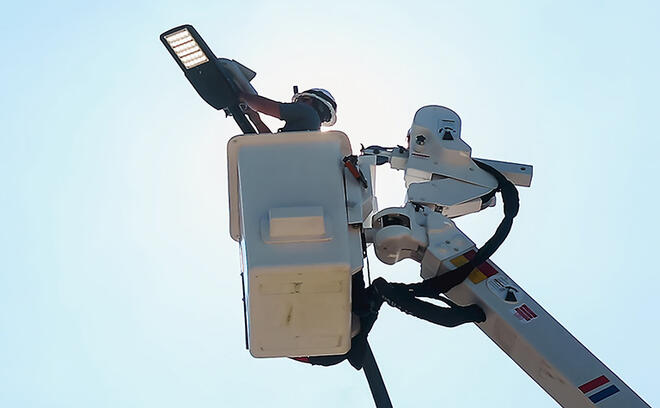AT&T begins deployment of 5G radios on streetlight posts

Image courtesy of AT&T
The Verge, Umar Shakir, 2.25.22
As streetlights improve, so does other infrastructure
AT&T today announced it’s field testing new 5G small cell radios that can hide on top of street lamp posts. The new radios were born out of a partnership between AT&T, mobile technology manufacturer Ericsson, and urban solutions provider Ubicquia.
“It is virtually unseen from street level,” wrote Gordon Mansfield, AT&T’s VP of mobility access & architecture, in a company blog post. Mansfield touted that these new low- / mid-band 5G radios can be deployed within 15 minutes on street lamps. “No long wires and big, bulky boxes – a true aesthetic improvement,” Mansfield wrote.
Anything that helps 5G blend in is a good thing since there’s also "ground furniture"and being a target of vandalism to worry about. These new small cell radios are not a replacement for the much faster but more visible mmWave antennas that can cover only a couple of city blocks. But since the new radios are powered by street lamps and connected to nearby fiber, it could reduce the need to erect more standalone small cell towers in cities.
Street lights have become a pylon for many modern technologies in cities. By piggybacking off of existing infrastructure, technology like public Wi-Fi access points, security cameras, and gunshot-detecting sensors can be holstered on the poles. There are even companies like Ubitricity that add electric vehicle charging to street lights.
It would be welcome to get more reliable 5G data connections in cities without the ugly boxes scattering city blocks — especially if it means deploying to more underserved communities that don’t have proper connectivity. But AT&T is only “poised” to begin using the small cells, which were being trialed by the company last year. “We are now in the process of field testing and deploying commercially available units in multiple cities,” Mansfield wrote.

